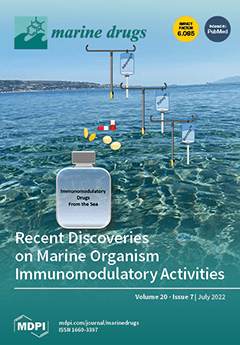Blooms of the benthic toxic dinoflagellate genus
Ostreopsis have been recorded more frequently during the last two decades, particularly in warm temperate areas such as the Mediterranean Sea. The proliferation of
Ostreopsis species may cause deleterious effects on ecosystems and can impact human
[...] Read more.
Blooms of the benthic toxic dinoflagellate genus
Ostreopsis have been recorded more frequently during the last two decades, particularly in warm temperate areas such as the Mediterranean Sea. The proliferation of
Ostreopsis species may cause deleterious effects on ecosystems and can impact human health through skin contact or aerosol inhalation. In the eastern Atlantic Ocean, the toxic
O. cf.
ovata has not yet been reported to the north of Portugal, and the only species present further north was
O. cf.
siamensis, for which the toxic risk is considered low. During summer blooms of unidentified
Ostreopsis species on the French Basque coast (Atlantic) in 2020 and 2021, people suffered from irritations and respiratory disorders, and the number of analyzed cases reached 674 in 2021. In order to investigate the causes, sampling was carried out during summer 2021 to (i) taxonomically identify
Ostreopsis species present using a molecular approach, (ii) isolate strains from the bloom and culture them, and (iii) characterize the presence of known toxins which may be involved. For the first time, this study reports the presence of both
O. cf.
siamensis and
O. cf.
ovata, for which the French Basque coast is a new upper distribution limit. Furthermore, the presence of ovatoxins a, b, c, and d in the environmental sample and in a cultivated strain in culture confirmed the toxic nature of the bloom and allowed identifying
O. cf.
ovata as the producer. The present data identify a new health risk in the area and highlight the extended distribution of some harmful dinoflagellates, presumably in relation to climate change.
Full article






